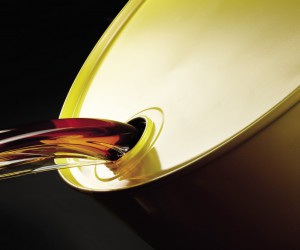In business, everybody is striving for the lowest total operation costs. The local fleet operator is faced with the following factors:
• Changing market forces
• Diverse fleets of various origins, some new and some older
• Rand/dollar/euro/yen exchange rates that affect servicing, maintenance, repair and parts costs
• Local operating conditions and people
There are more than 18 major brands of heavy-duty commercial vehicle, of differing origins, being marketed in South Africa and each original equipment manufacturer (OEM) claims theirs is the most suitable for our market.
OEM drivers
First-world government legislation makes it mandatory that OEM engines meet increasingly stringent emission requirements; these OEMs supply the majority of engines to SA. Due to globalisation, all future engines will have to comply with these emission standards. In order to remain competitive, OEMs have been increasing service and oil drain intervals, while improving performance levels and durability.
The above criteria tend to be in conflict with each other and differing innovative technical solutions have been developed to meet these requirements. Lubricant manufacturers are required to meet more demanding and more stringent technical standards to be able to market OEM-approved lubricants.
Low-emission engines
In the early days, addressing the legislated emission criteria was relatively easy through technology, but nowadays more stringent rules have made this difficult, especially for emissions such as particulates and nitric oxides (NOx), which are of concern to OEMs. One can see by the graph how legislated emission levels have decreased since 1990. Euro 6 was introduced in January this year and is effectively less than half the amount allowed in 2008 (NOx = 0.4 and PM = 0.01). A scale too small to be used on
this graph.
Various different technologies are available to be used by OEMs to meet these required emission levels. The main ones are:
• Combustion control
• Exhaust gas recirculation (EGR)
• Particulate traps (DPF)
• Selective catalytic reduction (SCR)
• Oxidation catalyst (DOC)
The above technologies are used in various combinations with each other to achieve the desired result, depending on the design philosophy favoured by the OEM. They all place a differing emphasis on the various properties of a lubricant. The bottom line is, they all put more stress on the lubricants in one way or another and have differing technical concerns.
Fuel consumption vs NOx emissions
As can be seen from the graph, EGR, retarded injection timing, and suppressed ignition technologies used to reduce NOx have the effect of increasing fuel consumption. The only system that satisfies both requirements appears to be SCR.
Particulate emissions vs NOx emissions
From the second graph, it can be seen that there is a conflict between particulate emissions and NOx emissions when no after-treatment devices are fitted. The only systems that satisfy both requirements are particulate traps and SCR. All the OEMs have now conceded that to meet Euro 6 emission levels (and the United States equivalent thereof), SCR will have to be used. SCR units require AdBlue or diesel exhaust fluid, which is injected into the exhaust stream before it enters the SCR unit. Typically, the consumption rate is between 3% and 5% of the amount of diesel consumed. Using SCR technology allows the OEM to ‘tune’ the engine to maximum fuel efficiency, without worrying about the emissions, leaving the SCR unit to reduce emissions to the prescribed level. The fuel saving normally offsets the added cost of the AdBlue.
Effect on lubricants
Previously, most of the various OEMs required performance levels could be met and combined in one lubricant (similar requirements – one lube for all). The modern trend, however, is toward differing requirements to meet very specific criteria – dedicated lubes formally approved as service fluids. With regard to the lubricant, there is a conflict of requirement from various OEMs, depending on their design criteria and philosophy on how they can assist in addressing emission requirements.
For example, EGR type technology needs to be used in conjunction with high-
dispersancy lubricants to handle high soot content.
Most OEMs have now indicated their requirements for what is known as ‘low SAPS’ lubricants by virtue of the technologies preferred and used by them. Low SAPS stands for low sulphated ash, phosphorous and sulphur content of the lubricant.
Why the OEM requirement for low SAPS lubricants
Low SAPS oils are required to achieve the desired degree of performance and durability of the engine management and emission control devices of OEMs. Combustion compounds tend to foul control devices in a similar way to which lead in petrol fouls catalytic converters and reduces their efficiency.
Previously, OEMs required high-performance lubricants that were typically high in ash and high in TBN. The high SAPS components in the lubricant were the main contributor to their high performance. To satisfy the new low SAPS requirements, radical new technology is required to achieve the same performance and service life of the lubricant.
The facts
Unfortunately, lubricants are now no longer a commodity purchased on price. They are a complex and critical component designed to meet very specific performance criteria. Modern engines will not achieve their designed durability and performance if the specified lubricants are not used.
To put this all into perspective, the lubricants’ contribution to the total operating cost of a truck is less than 0.8%. The potential cost saving of a ‘cheap’ lubricant vs the price of downtime, spare parts, labour etc. would be very difficult to calculate.










